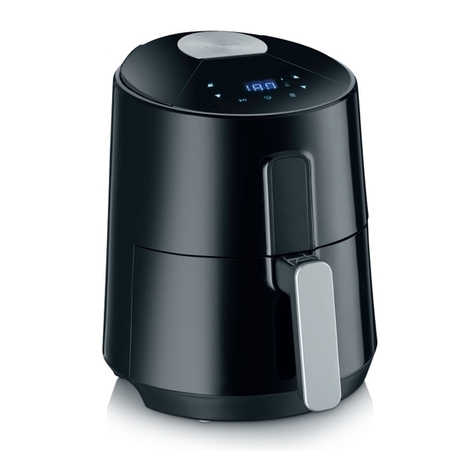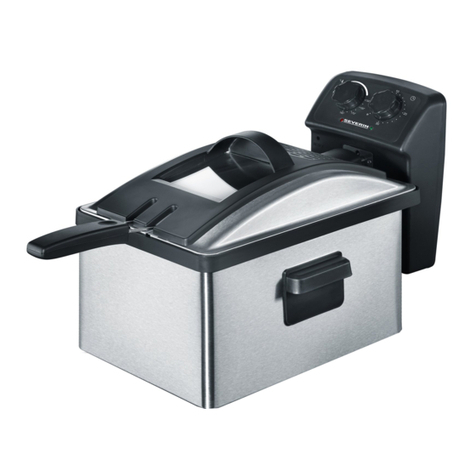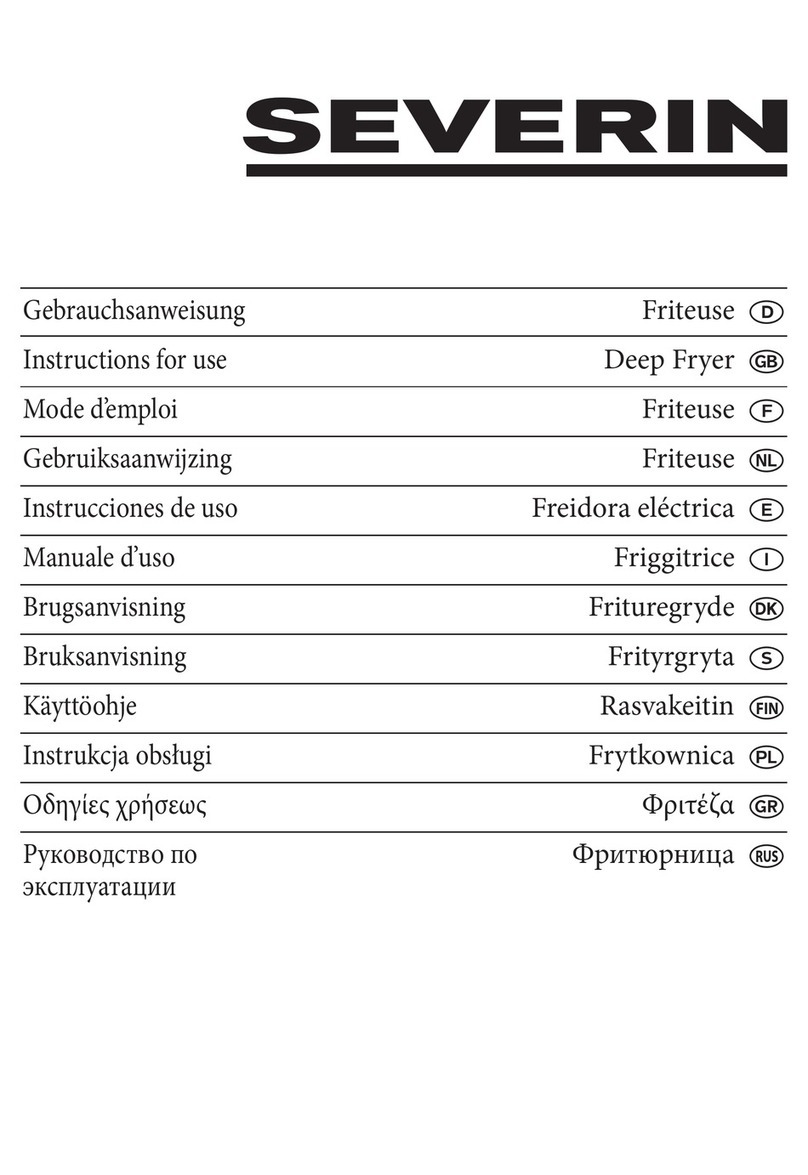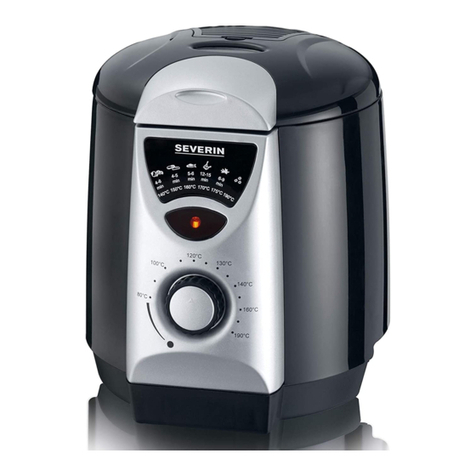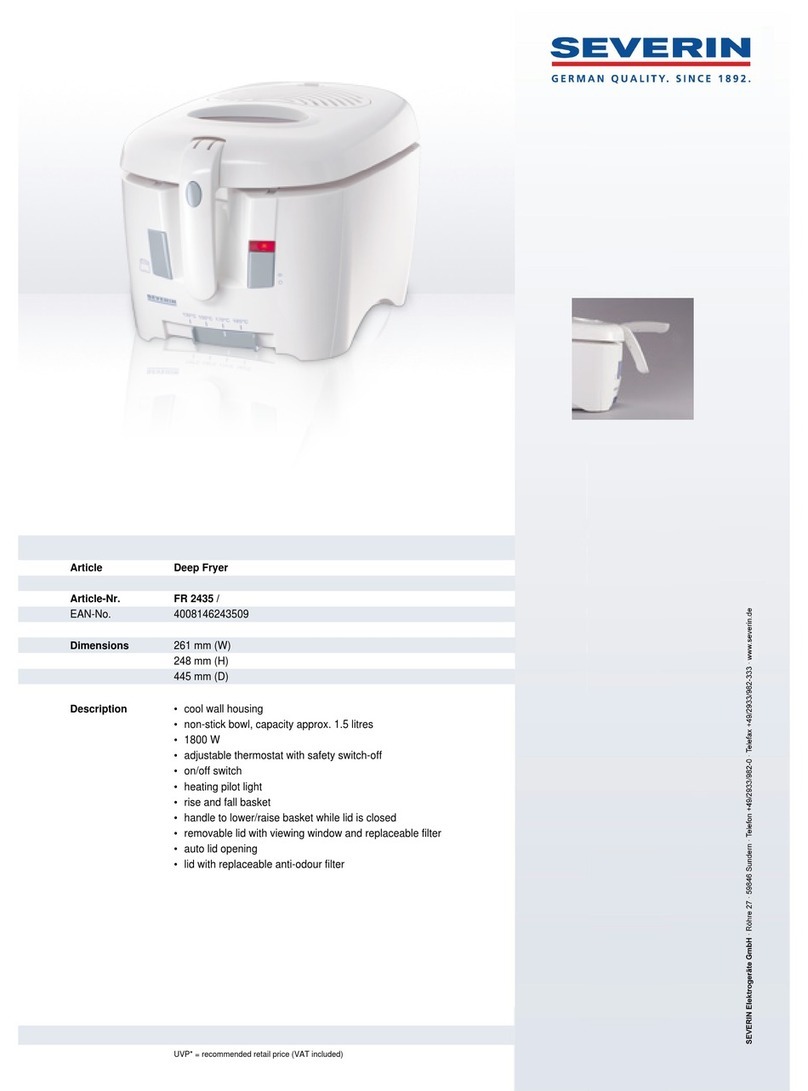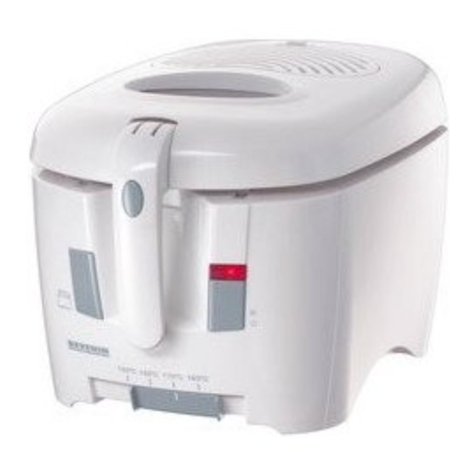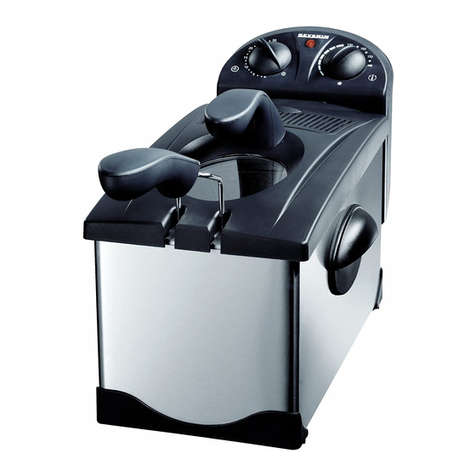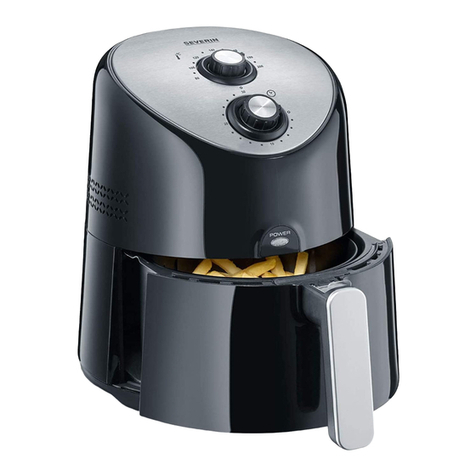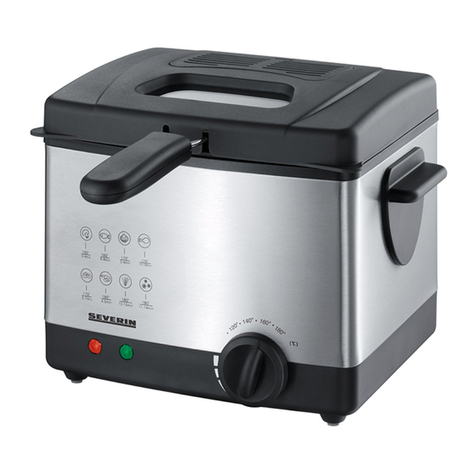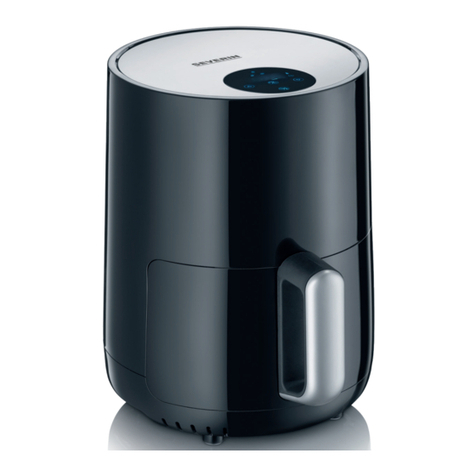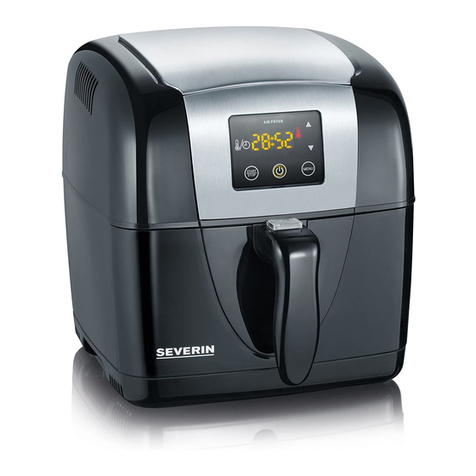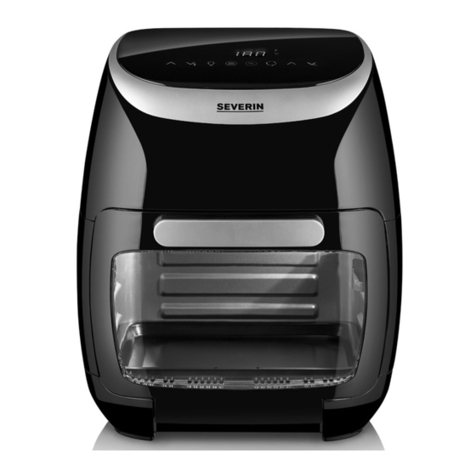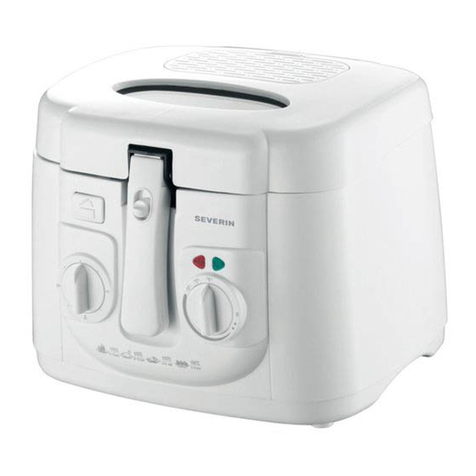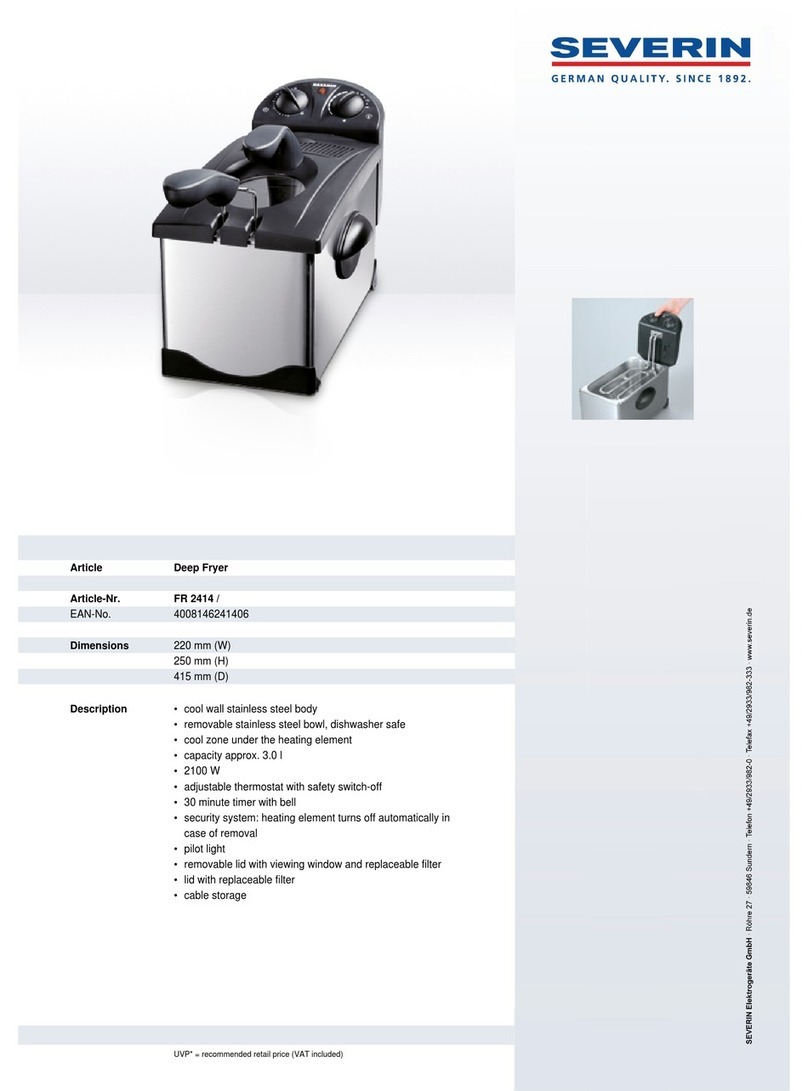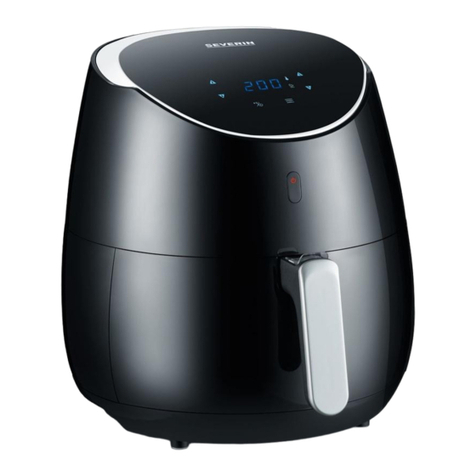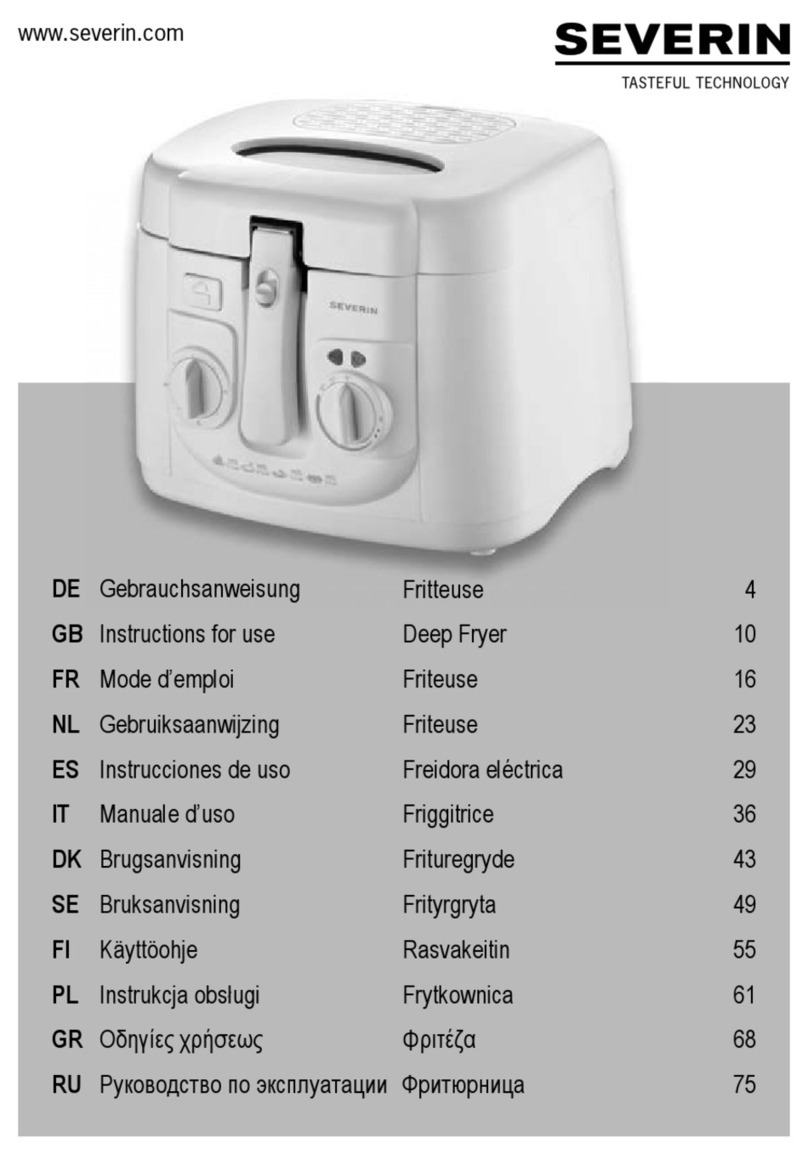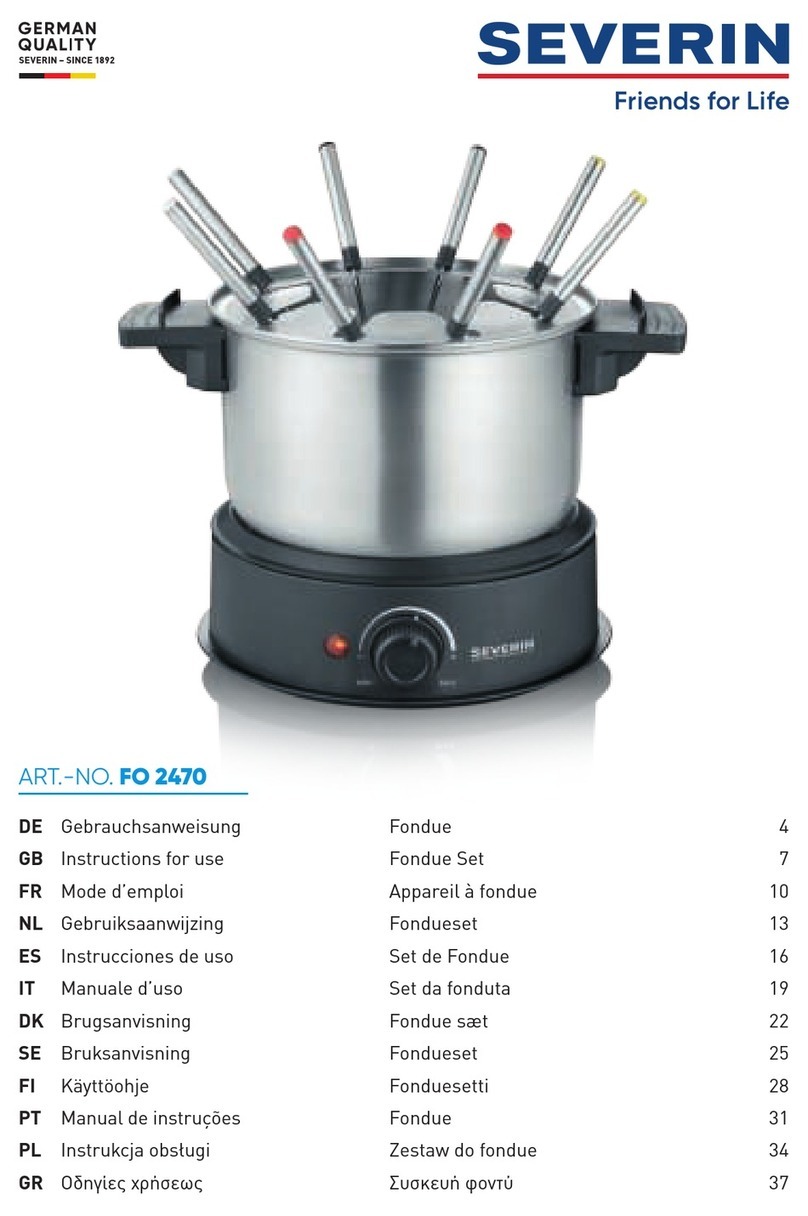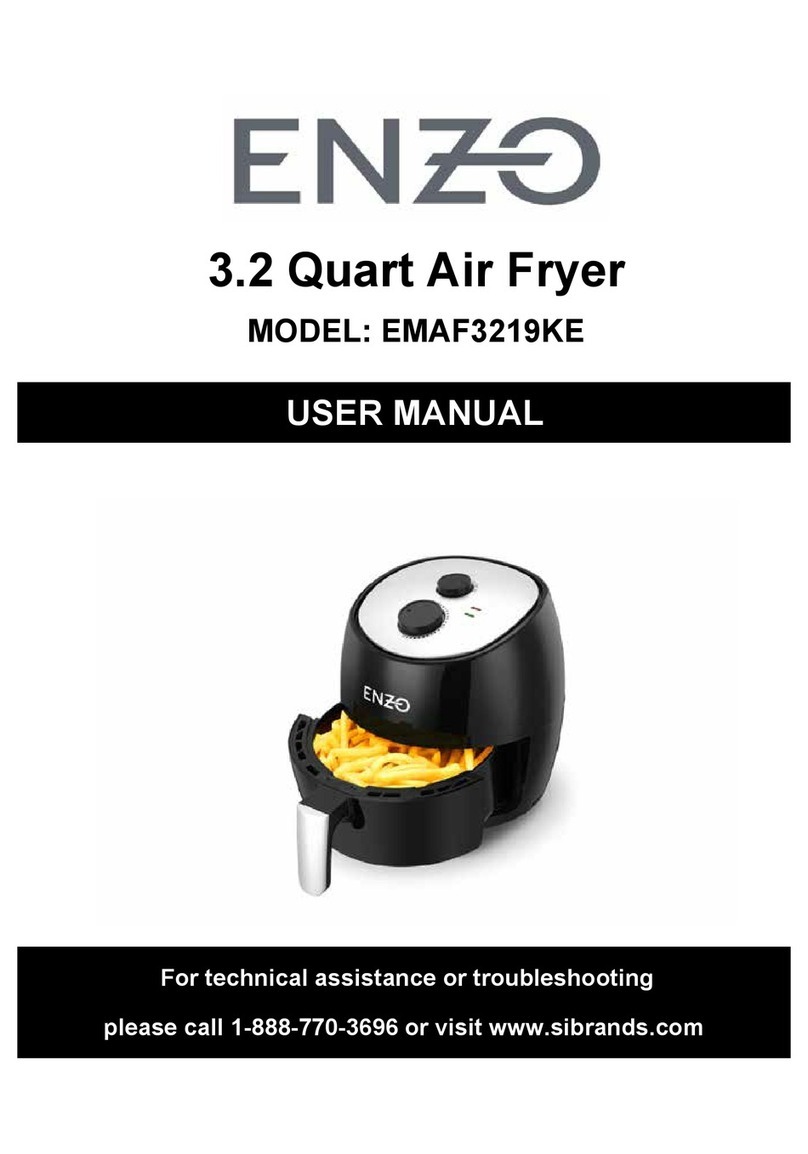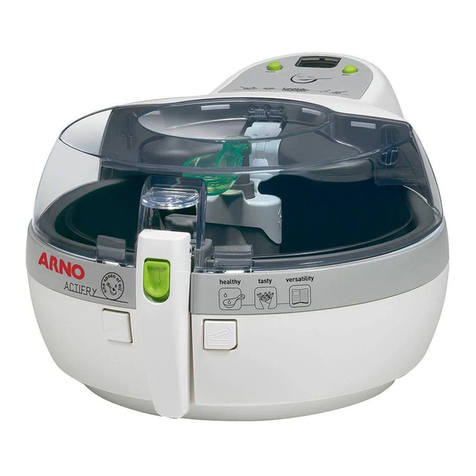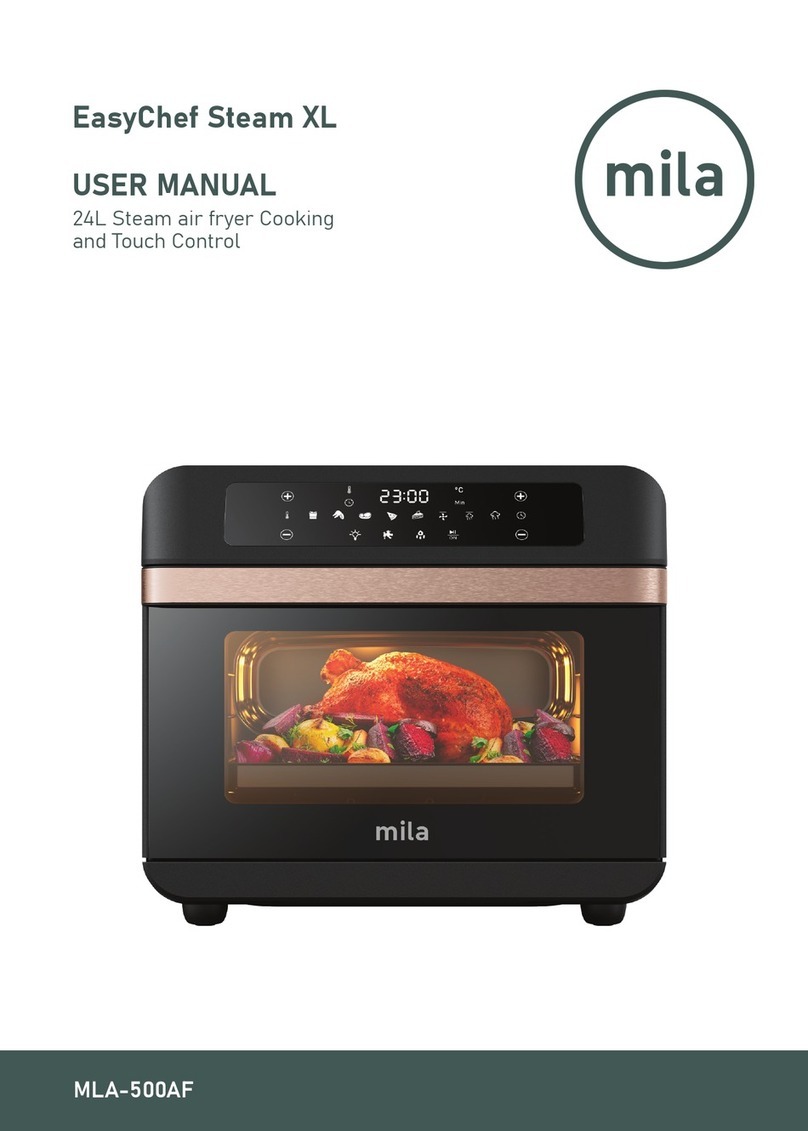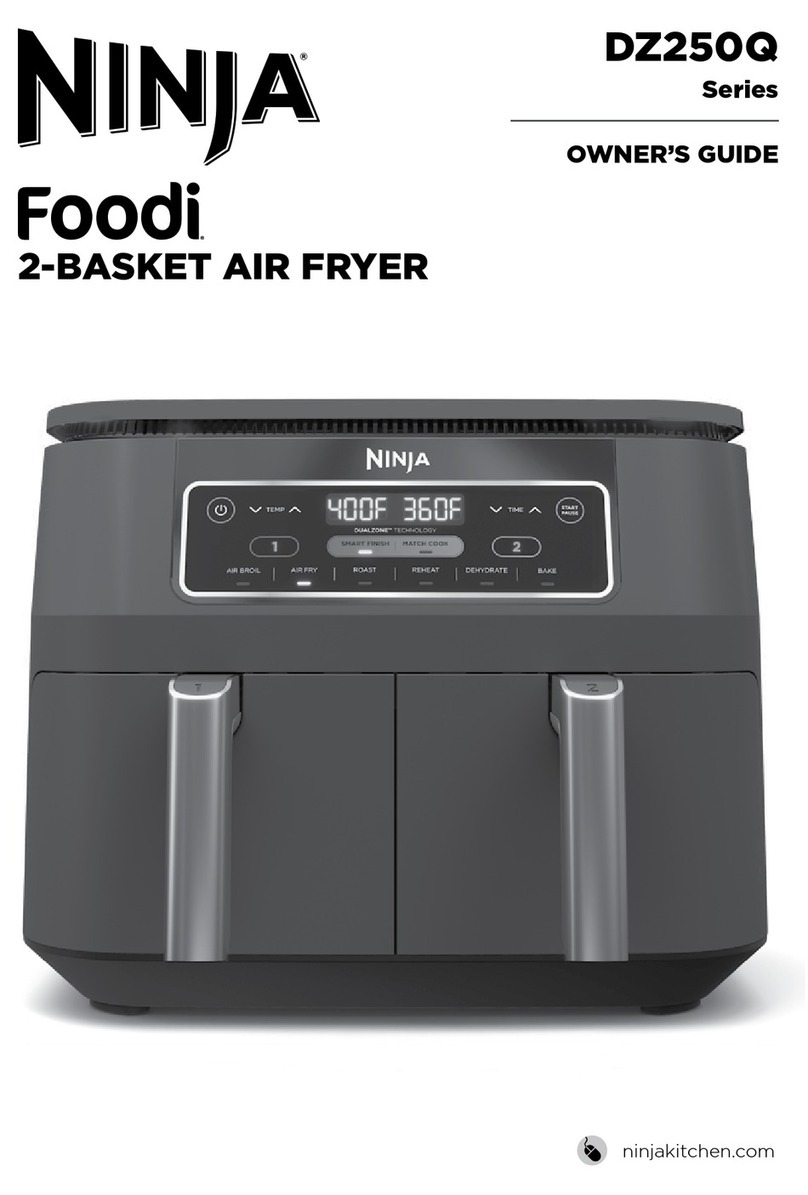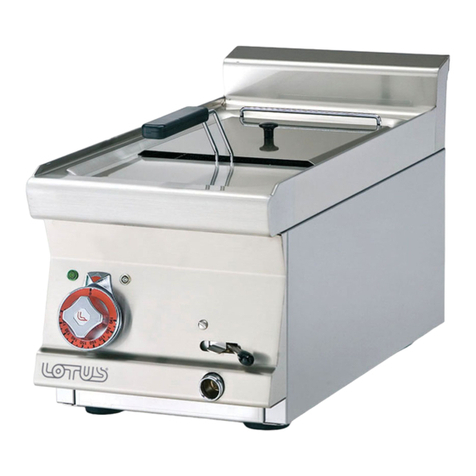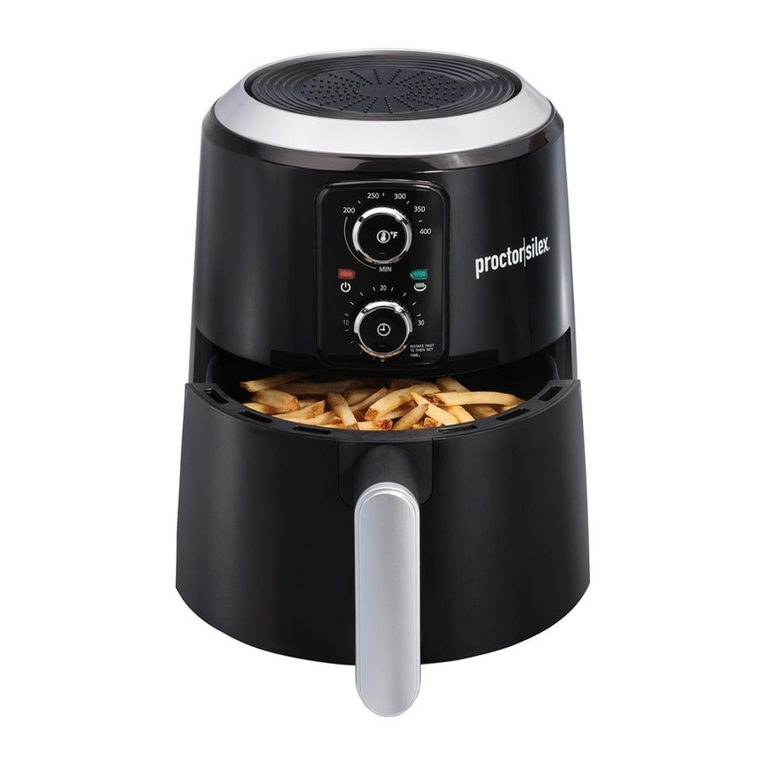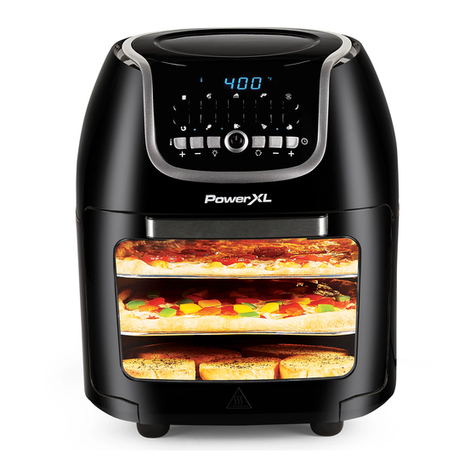
8. When using battered food, make sure
that the batter is rmly attached to the
food and all excess our is removed.
9. Oen-used oil/fat is readily recognisable
as it is viscous and darker in colour, and
gives o an unpleasant smell or tends to
foam.
10. Old oil/fat (or oil containing a residue of
particlesfromearlieruse) isinammable
and tends to ignite easily. It is therefore
best to change the oil/fat aer it has
been used three or four times, bearing
in mind that its life-span depends
mainly on the kind and quantity of food
fried.
11. e life span can be extended by ltering
the frying oil/fat aer each cycle of use.
12. e frying oil/fat may be stored inside
the deep fryer if the unit is kept closed
and stored in a cool place.
Nutrition-conscious deep-frying
For nutritious, healthy deep-frying we
recommend to use a temperature setting
of no higher than 175°C when deep-frying
amylaceous food, i.e. food with a higher-than-
average starch content. With the reduced
frying temperature, and with an equally
reduced amount of food in the frying basket,
the build-up of substances detrimental to
health is limited to a minimum.
General care and cleaning
Before cleaning the appliance, ensure it isz
disconnected from the power supply and
has cooled down completely.
To avoid the risk of electric shock, do notz
clean the appliance with water and do not
immerse it in water.
Do not use abrasives or harsh cleaningz
solutions.
Before the appliance is used for the rstz
time, the frying container and the baskets
should be thoroughly cleaned. e inside
of the lid may be cleaned with a slightly
damp, lint-free cloth. To prevent any
remaining water from mixing with the
oil/fat, ensure that all parts are thoroughly
dried.
To remove the oil from the frying–
container, wait until the oil/fat has cooled
down suciently but is still liquid;
carefully take out the heating element and
remove the oil/fat with a soup ladle. Once
the temperature has dropped suciently,
you may also remove the frying container
carefully and pour out the oil/fat into a
heat-resistant container. e oil/fat can be
ltered by pouring it through absorbent
paper inserted into a heat-resistant funnel
or into the frying basket itself.
Do not pour frying oil/fat down thez
kitchen sink. Once cold, it may be disposed
of together with your household refuse.
Remove the frying container before–
cleaning. e baskets, handles, housing
and container should be cleaned in hot
soapy water. Ensure that all parts are
thoroughly dried aerwards.
e lid contains a fat lter, which should–
be cleaned aer every few frying cycles.
To access it, unlock the lter compartment
cover and remove the lter. Clean the lid,
fat lter and compartment cover in hot
soapy water; ensure that all parts are
thoroughly dried aerwards. Insert the
clean fat lter and replace the cover.
Replacement fat lters are available–
through Severin Service.
e exterior housing of the heating–
element may be cleaned with a damp, lint-
free cloth.
Disposal
Do not dispose of old or defective
appliances in domestic garbage;
this should only be done through
public collection points.
Guarantee
is product is guaranteed against defects
in materials and workmanship for a period
of three years from the date of purchase.
Under this guarantee the manufacturer
undertakes to repair or replace any parts
found to be defective, providing the product
14


















